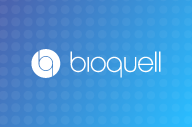Formaldehyde – what does the future hold?
January 2019
John Chewins, Director, Scientific & Regulatory Affairs – Bioquell
As most laboratory professionals will be aware, on the 1st January 2016, the EU officially adopted the reclassification of Formaldehyde, under the CLP (Classification, Labelling and Packaging) Regulations EC 1272/2008, as a Class 1B Carcinogen and Class 2 Mutagen. In simple terms, a Class 1B identification means that Formaldehyde is presumed to have carcinogenic potential in humans – i.e. it is thought to cause cancer.
Under the European Biocidal Products Regulation (528/2012), a chemical classified as a Class 1B Carcinogen cannot be authorised for use as a biocidal product. However, under certain circumstances a product may be authorised for specific limited applications with specific conditions of use. This position and the associated uncertainty as to the future of Formaldehyde as a laboratory biocide led to the UK HSE issuing the following statement in their July 2015 Ebulletin:
“HSE therefore recommends that users start to look into the development of alternative gaseous disinfectants for rooms and equipment, whilst there is time to do so”
So what is the position today?
In December 2017, the European Biocidal Products Committee (BPC) released its long awaited opinion on the authorisation of Formaldehyde as a biocide active substance within Product Type 2 (PT2)1. PT2 covers disinfectant products not intended for direct application to humans and animals – this covers the majority of disinfectant products used within laboratory and pharmaceutical areas. The BPC recommended that Formaldehyde should be approved for PT2 use.
Although the BPC recommended approval, the authorisation comes with limitations, particularly in relation to the use of Formaldehyde as a surface disinfectant delivered via the air (i.e. Formaldehyde fogging). Fogging is used extensively in research laboratories and animal research facilities as a general-purpose disinfectant. It is often used in transfer chambers to decontaminant product entering or exiting classified areas, with fogging cycles occurring multiple times per day.
The BPC PT2 opinion authorises the use of Formaldehyde for automated fogging as follows:

The BPC conclusion is that disinfection by automated fogging can only occur in an epidemic case. The opinion document clarifies an epidemic case as follows:
![]()
As epidemic use is considered to be once per year, although Formaldehyde has received a PT2 approval opinion, it limits the use of Formaldehyde fogging to once a year. In practical terms, this eliminates Formaldehyde as a standard surface fogging-based disinfectant agent and has considerable implications for laboratories and industry who rely on Formaldehyde fogging. The implications were not lost on the BPC committee, as the minutes of the opinion ratification meeting show2:

To date, very little action or awareness raising appears to have been undertaken. Many laboratory professionals are under the false impression that the BPC PT2 opinion means that standard Formaldehyde fogging has a future authorisation. Users should take heed of the HSE’s 2015 advisory note and start planning for the use of alternative chemistries.
So how long has Formaldehyde fogging got left?
At the moment, nobody knows. The BPC opinion has to be officially ratified by the European Commission. In June 2018, new rules governing the use of endocrine disrupting (ED) chemicals within biocides came into force. As the original BPC evaluation did not include the potential ED properties of Formaldehyde, these must be reviewed prior to the European Commission providing a final approval. The Commission estimates this may take twelve to eighteen months.
Based on the BPC PT2 opinion, users applying Formaldehyde fogging on a regular basis should take the time extension provided by the ED review to investigate and plan for the implementation of an alternative automatic airborne disinfection system.
References:
1 Biocidal Products Committee (BPC) Opinion on the application for approval of the active substance: Formaldehyde Product Type 2. ECHA/BPC/181/2017. https://echa.europa.eu/documents/10162/1157ea21-ca37-d70e-7913-0d7139276fea
2 Minutes of the 23rd meeting of the Biocidal Products Committee (BPC) 11-14 December 2017. BPC-M-23-2017.
About Bioquell
Bioquell is a well-established global leader in the design and manufacture of bio-decontamination solutions for risk reduction within the healthcare, life science and pharmaceutical industries. The UK-based company operates worldwide through its own sales offices and international distributor network.
Bioquell’s industry-leading Hydrogen Peroxide Vapor technology is used across the world to eradicate biological contaminants including problematic bacteria, viruses and fungi on every exposed surface in any suitable enclosure to ensure maximum uptime. Deployment of Bioquell’s Hydrogen Peroxide Vapor process provides residue-free, safe and repeatable disinfection of rooms, buildings, equipment and sensitive electronics. It is a clear alternative when replacing traditional methods such as formaldehyde or chlorine-based products.







